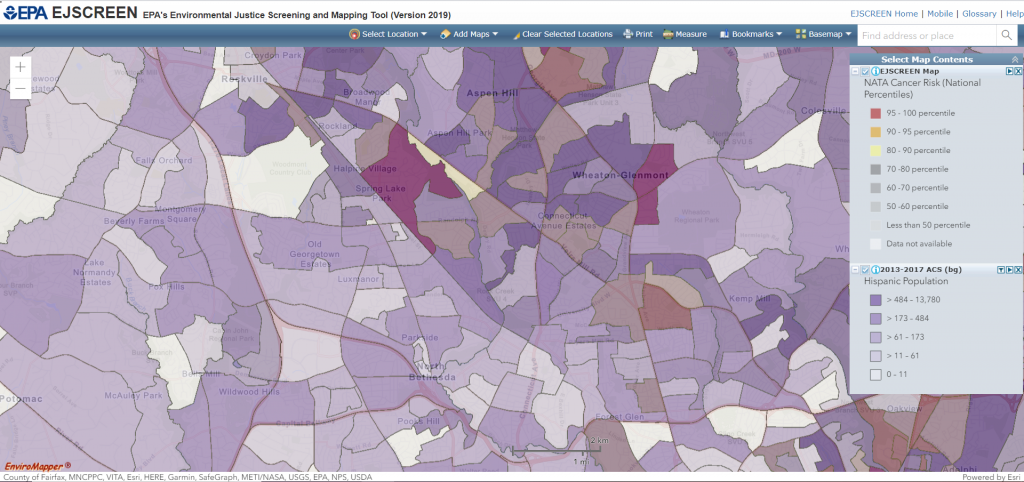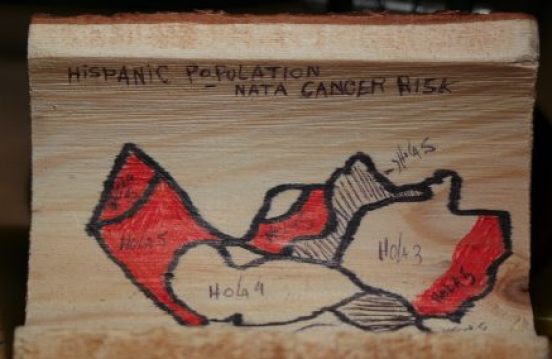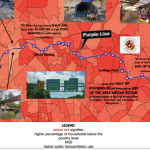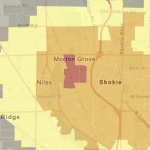
The purpose of this investigation is to find if there are environmental injustices when we look at different groups of individuals’ exposure to high levels of Formaldehyde, which contributes to NATA cancer-related health complications, in the area of Wheaton-Glenmont, in the state of Maryland. To better visualize any possible injustice in relation to this particular hazard, the city of Bethesda, located 6.6 miles away from Wheaton-Glenmont will also be highlighted with detailed information about its demographic for comparison. When looking at the NATA cancer risk percentile in relation to other socio-economic factors, such as population below poverty, years of education, as well as the percentage of the minority population, it is clear that the Wheaton-Glenmont area is widely higher on the NATA cancer percentile layer, ranking in most of its subgroups between the 80th and 100th percentile. Because of some of the socio-economic, as well as other factors demonstrating a disproportionate rate of exposure for Hispanics, the focus group of study for this project will be reduced to Hispanics living in the area of Wheaton-Glenmont. Some of the major health implications when individuals are exposed to high levels of Formaldehyde might range from mild lung effects, such as asthma and allergies, to eczema and lung cancer. High concentrations of Formaldehyde can be easily found in both indoors as well as outdoors, but it is predominantly affecting construction workers because of the hazardous material that they are constantly exposed to. Based on the disproportionate exposure of the Hispanic population of the area of Wheaton-Glenmont to this particular type of air pollution, it is possible to affirm that there is an environmental injustice present in our area of focus.

Recycled Visual








parsonsa
May 1, 2020 — 5:38 pm
Your visual is so creative! I love how you used Spanish words to demonstrate that it is the Hispanic population that is exposed to greater environmental bads. Great idea using wood as your medium!
MR
May 1, 2020 — 5:41 pm
I admire your visual as it does a great job conveying your environmental bad. You being able to involve your younger brother into the project and teach him about your environmental bad is super important to inform the younger generation about issues in the environment.
A.R.
May 1, 2020 — 5:50 pm
I love your visual. I feel like your research highlights how workers’ rights are directly tied to environmental justice – and I feel that this is not a connection that is made often. When considering construction work increasing this exposure, it brings up the issue of why more environmentally hazardous jobs are allocated to people with lower education or impoverished people opposed to affluent non-minorities with higher education rates. When thinking about the Hispanic community as well, we see that language disparities can also limit their ability to advocate for better working conditions – or even know that they are in harmful working conditions in the first place. The necessity of transparency is evident when looking at this injustice.
Anna
May 1, 2020 — 5:59 pm
You chose such a creative way to follow the ‘zero waste’ idea behind the project! The use of tree bark is not only making use out of something that otherwise would probably not be used, but also emphasize the environmental bad behind this unjust sustainability. Great project!
messimeg
May 1, 2020 — 6:13 pm
Your visual is such a creative way to showcase the problem! It makes it easy to understand the injustice and what is going on and I like your use of Spanish words to show the minority populations in each area. This was a great way to tie workers into the environmental bad!